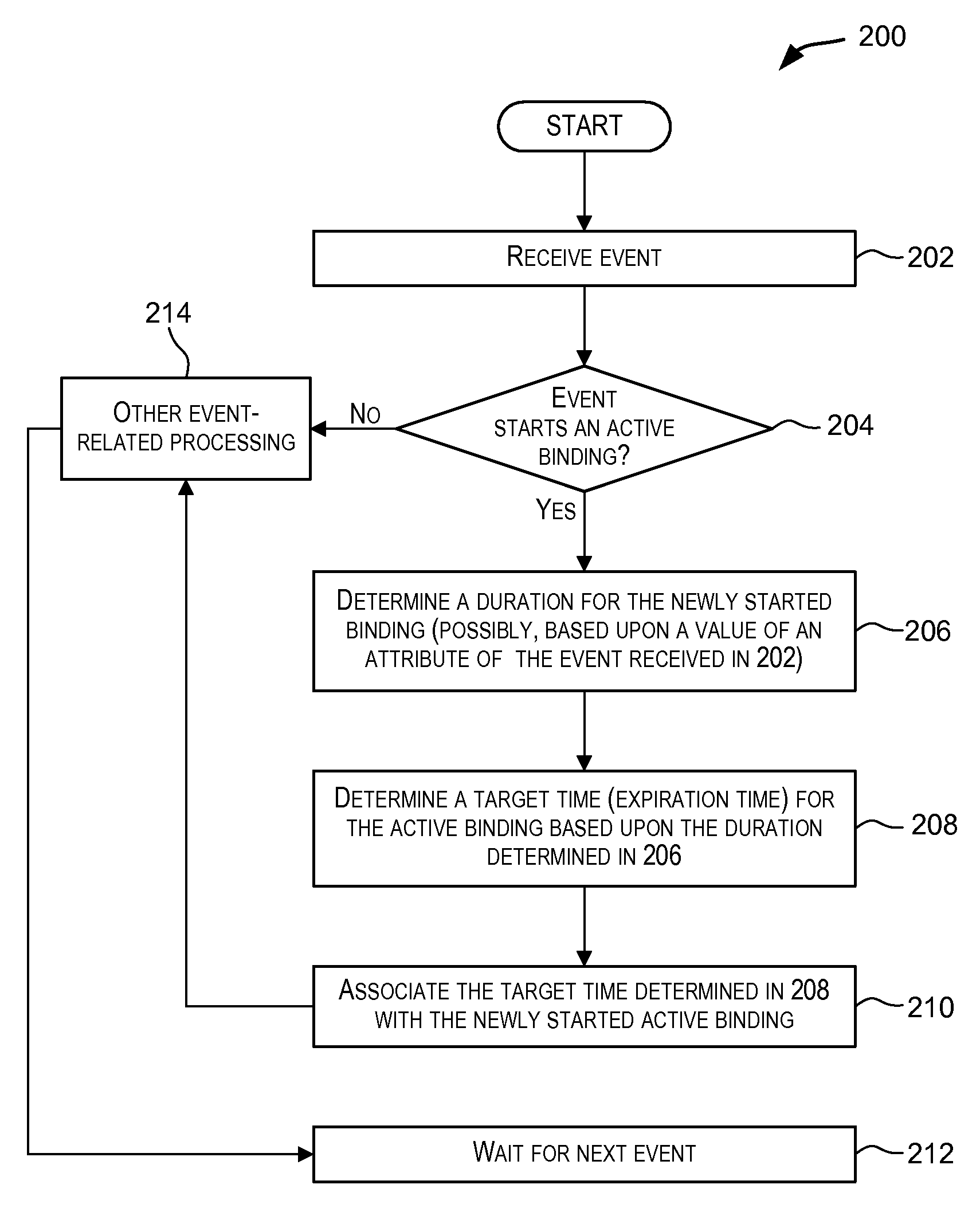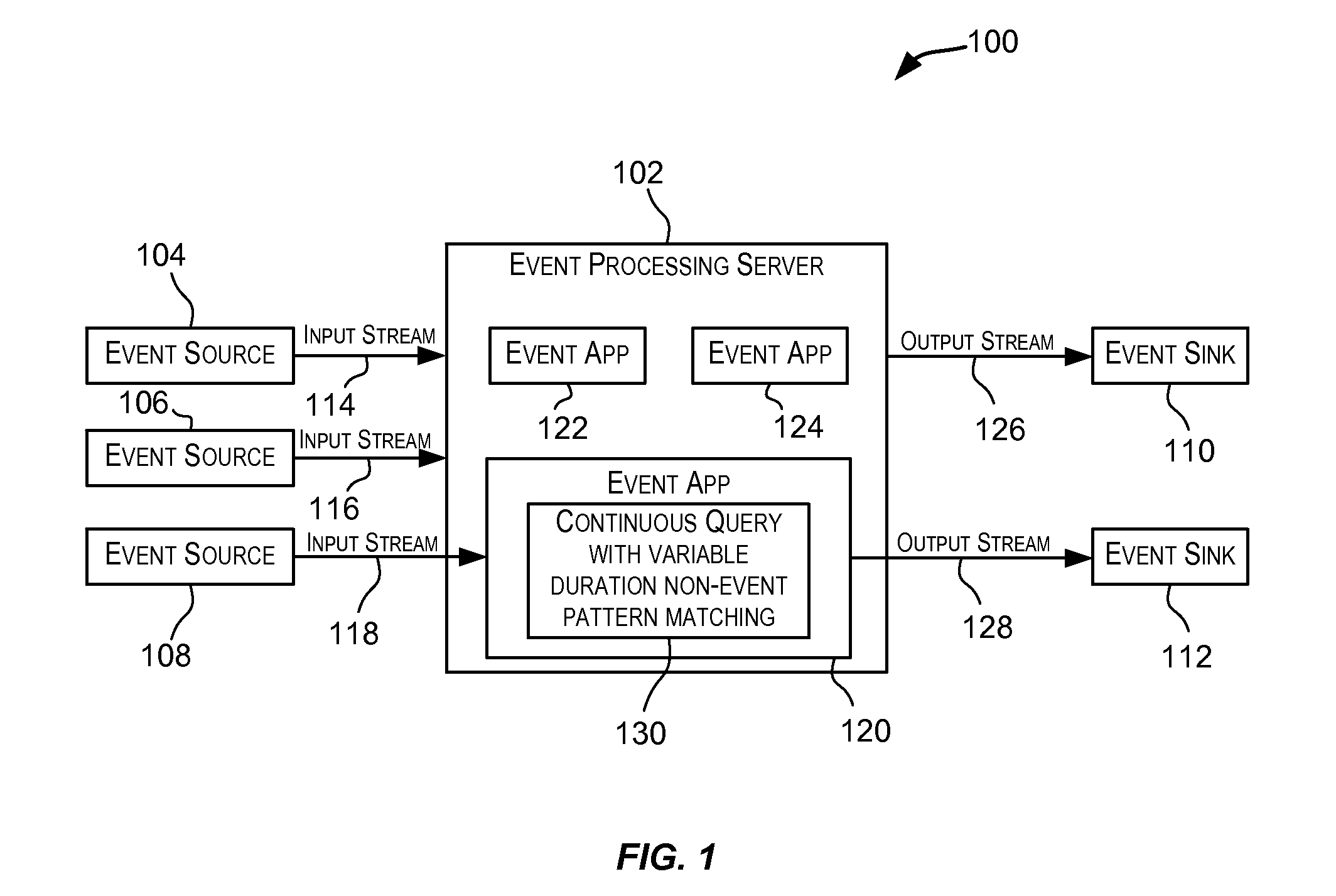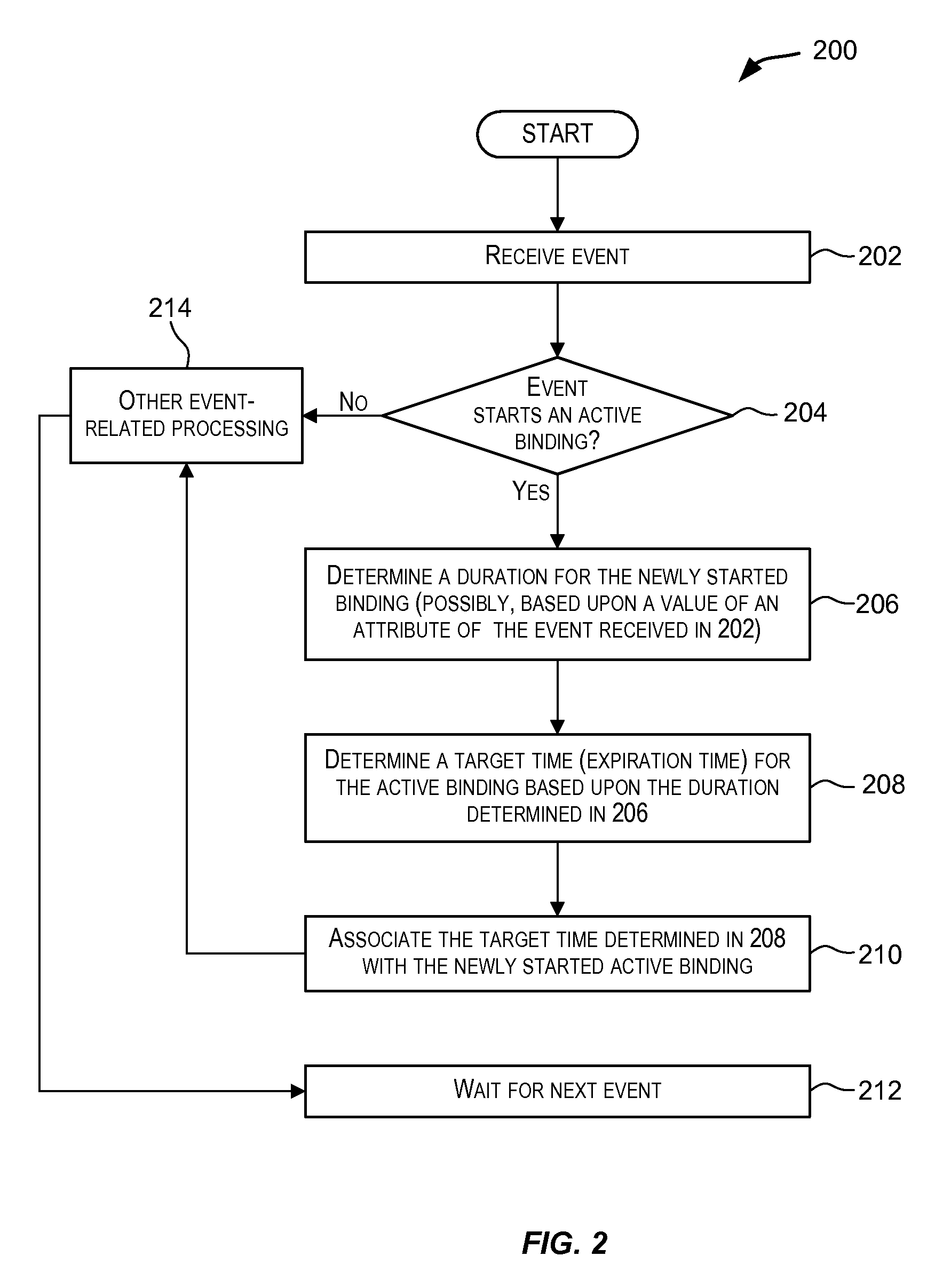Variable duration non-event pattern matching
a non-event pattern matching and variable duration technology, applied in the field of data processing systems, can solve the problems that product offerings still lack the processing flexibility required for handling today's event processing needs, and achieve the effect of greater flexibility in performing
- Summary
- Abstract
- Description
- Claims
- Application Information
AI Technical Summary
Benefits of technology
Problems solved by technology
Method used
Image
Examples
example # 1
Example #1
Purchase Order Tracking Application
[0056]A purchase-order tracking system has to be capable of tracking orders where the ordered items have not been shipped even though the estimated time of delivery for the ordered items has elapsed. For example, the workflow for the purchase-order system may be: order is placed, order is processed; and ordered items are shipped and an estimated time of delivery may be provided for the orders. The application is configured to report a non-event when an order is placed, is in process, but has not yet been shipped even though the estimated time of delivery has elapsed. Here, placing an order and shipping of items may be modeled as separate events. It can be observed that the estimated time of delivery can be inherently dependent on the items being ordered and shipped since this could be different for different purchase orders depending on the items involved. This variability based upon the items being shipped cannot be modeled using convent...
example # 2
Example #2
Airport Passenger Tracking Application
[0057]Airlines may wish to track the time when a passenger lands and when the passenger arrives at the baggage claim area. An airline may expect that upon landing the passenger shows up at the baggage claim area within a particular timeframe, say 30 minutes. This timeframe expectation may be different for different airlines. In this scenario, the landing of a passenger and the passenger's arrival at the baggage claim area may be modeled as separate events: event A for landing and event B for arrival at the baggage claim area. The landing may be modeled using a regular expression as (A). The duration for this pattern may be expressed as (T+delay), where T is the time when a passenger lands (i.e., timestamp of event A) and where “delay” is the time an airline expects the passenger to be at the baggage claim area (i.e., the occurrence of event B). The “delay” may be 30 mins for one airline, and may be airline specific. Non-events may be r...
PUM
 Login to View More
Login to View More Abstract
Description
Claims
Application Information
 Login to View More
Login to View More - R&D
- Intellectual Property
- Life Sciences
- Materials
- Tech Scout
- Unparalleled Data Quality
- Higher Quality Content
- 60% Fewer Hallucinations
Browse by: Latest US Patents, China's latest patents, Technical Efficacy Thesaurus, Application Domain, Technology Topic, Popular Technical Reports.
© 2025 PatSnap. All rights reserved.Legal|Privacy policy|Modern Slavery Act Transparency Statement|Sitemap|About US| Contact US: help@patsnap.com



